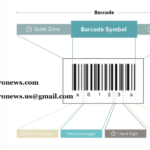In today’s fast-paced digital landscape, businesses are constantly seeking innovative ways to connect with their target audiences. One emerging concept that has garnered significant attention is Mıllıeyt – a term that encapsulates the collective consciousness and cultural identity of a diverse group of individuals.
This article delves deep into the role of Mıllıeyt in shaping modern marketing strategies, exploring its implications, challenges, and opportunities.
Understanding “Mıllıeyt”:
Mıllıeyt refers to the unique blend of cultural backgrounds, beliefs, values, and experiences shared by a specific group of people. It transcends traditional demographics and encompasses a more holistic understanding of consumer behavior.
In essence, it recognizes that individuals are shaped by various socio-cultural factors, influencing their preferences and purchasing decisions.
Segmentation and Targeting:
Incorporating Mıllıeyt into marketing strategies involves a shift from traditional demographic segmentation to a more nuanced approach. Brands must recognize the diversity within their target audience and tailor their messaging accordingly.
Read more article: PossiblyEthereal
By understanding the cultural nuances and values that resonate with different Mıllıeyt groups, marketers can create more authentic and impactful campaigns.
Cultural Sensitivity and Authenticity:
One of the key challenges in leveraging Mıllıeyt in marketing is ensuring cultural sensitivity and authenticity. Brands must navigate the fine line between appreciation and appropriation, avoiding stereotypes and tokenism.
By actively engaging with Mıllıeyt communities, seeking feedback, and collaborating with cultural experts, brands can ensure that their messaging resonates authentically.
Building Trust and Loyalty:
Authenticity is crucial in building trust and loyalty among Mıllıeyt consumers. By demonstrating a genuine understanding and appreciation of their cultural values and experiences, brands can foster deeper connections.
This involves not only reflecting diversity in marketing campaigns but also implementing inclusive practices within the organization.
Inclusive Marketing Strategies:

Inclusive marketing goes beyond representation to actively involve Mıllıeyt communities in the creative process. Brands can co-create content with diverse voices, ensuring that their narratives are accurately portrayed.
Read Also: SSIS 816
This collaborative approach not only leads to more authentic storytelling but also fosters a sense of belonging among consumers.
Navigating Cultural Differences:
One of the complexities of marketing to diverse Mıllıeyt groups is navigating cultural differences. What resonates with one segment may not necessarily appeal to another, requiring brands to adopt a flexible and adaptive approach.
Conducting thorough research and leveraging data analytics can provide valuable insights into cultural preferences and consumer behavior.
Embracing Diversity and Inclusion:
Incorporating Mıllıeyt into marketing strategies is not just about reaching a wider audience; it’s about embracing diversity and fostering inclusion.
Brands that champion diversity in their messaging and actions are more likely to earn the trust and loyalty of Mıllıeyt consumers. This commitment goes beyond marketing campaigns to encompass hiring practices, corporate social responsibility initiatives, and community engagement efforts.
The Role of Technology:
Technology plays a pivotal role in reaching and engaging diverse Mıllıeyt audiences. From social media platforms to personalized advertising algorithms, brands have access to a myriad of tools and channels to connect with consumers.
However, it’s essential to use technology responsibly, ensuring that data privacy and ethical considerations are prioritized.
Future Trends and Opportunities:
As society continues to evolve, so too will the concept of Mıllıeyt and its implications for marketing strategies. Brands that embrace diversity, authenticity, and inclusivity will be better positioned to thrive in an increasingly multicultural marketplace.
All Articles: Usa pro news
By staying attuned to shifting demographics and cultural trends, businesses can seize new opportunities for growth and innovation.
Conclusion:
In conclusion, the role of Mıllıeyt in modern marketing strategies is undeniable. By recognizing the diversity and cultural complexity of today’s consumers, brands can create more meaningful connections and drive long-term success.
Through authenticity, inclusivity, and a commitment to cultural sensitivity, businesses can harness the power of Mıllıeyt to drive innovation, foster loyalty, and make a positive impact on society.
Frequently Asked Questions (FAQs) about Mıllıeyt:
Q1. What is “Mıllıeyt” and why is it important in modern marketing strategies?
Ans: “Mıllıeyt” refers to the collective consciousness and cultural identity of diverse groups of individuals. It’s important in modern marketing because it helps brands understand the multifaceted nature of consumer behavior beyond traditional demographics.
Q2. How does incorporating “Mıllıeyt” affect segmentation and targeting in marketing?
Ans: Incorporating “Mıllıeyt” involves a more nuanced approach to segmentation and targeting, recognizing the diversity within the target audience and tailoring messaging accordingly. It enables marketers to create more authentic and impactful campaigns by understanding cultural nuances.
Q3. What are the challenges in leveraging “Mıllıeyt” in marketing, particularly regarding cultural sensitivity and authenticity?
Ans: One of the key challenges is ensuring cultural sensitivity and authenticity to avoid stereotypes and tokenism. Brands must navigate this fine line by actively engaging with “Mıllıeyt” communities, seeking feedback, and collaborating with cultural experts.
Q4. How does authenticity contribute to building trust and loyalty among “Mıllıeyt” consumers?
Ans: Authenticity demonstrates a genuine understanding and appreciation of cultural values and experiences, fostering deeper connections with consumers. By reflecting diversity in marketing campaigns and implementing inclusive practices, brands can build trust and loyalty.
Q5. What are some examples of inclusive marketing strategies that involve “Mıllıeyt” communities in the creative process?
Ans: Inclusive marketing involves co-creating content with diverse voices to ensure accurate portrayal of narratives. This collaborative approach not only leads to more authentic storytelling but also fosters a sense of belonging among consumers.
Q6. How do brands navigate cultural differences when marketing to diverse “Mıllıeyt” groups?
Ans: Brands must adopt a flexible and adaptive approach, recognizing that what resonates with one segment may not appeal to another. Thorough research and data analytics provide valuable insights into cultural preferences and consumer behavior.
Q7. Why is it important for brands to embrace diversity and inclusion in their marketing strategies?
Ans: Embracing diversity and inclusion is essential for earning the trust and loyalty of “Mıllıeyt” consumers. It goes beyond reaching a wider audience to fostering a sense of belonging and making a positive impact on society through inclusive practices.
Q8. How does technology play a role in reaching and engaging diverse “Mıllıeyt” audiences?
Ans: Technology provides brands with tools and channels to connect with diverse audiences, from social media platforms to personalized advertising algorithms. However, it’s important to use technology responsibly, prioritizing data privacy and ethical considerations.
Q9. What are some future trends and opportunities in leveraging “Mıllıeyt” in marketing strategies?
Ans: As society evolves, brands that embrace diversity, authenticity, and inclusivity will thrive in an increasingly multicultural marketplace. Staying attuned to shifting demographics and cultural trends presents new opportunities for growth and innovation.
Q10. In summary, how can businesses harness the power of “Mıllıeyt” to drive success in their marketing efforts?
Ans: By recognizing the diversity and cultural complexity of consumers, brands can create meaningful connections and drive long-term success. Through authenticity, inclusivity, and a commitment to cultural sensitivity, businesses can harness the power of “Mıllıeyt” to foster loyalty and make a positive impact on society.





























































































3 thoughts on “Exploring the Role of “Mıllıeyt” in Modern Marketing Strategies”